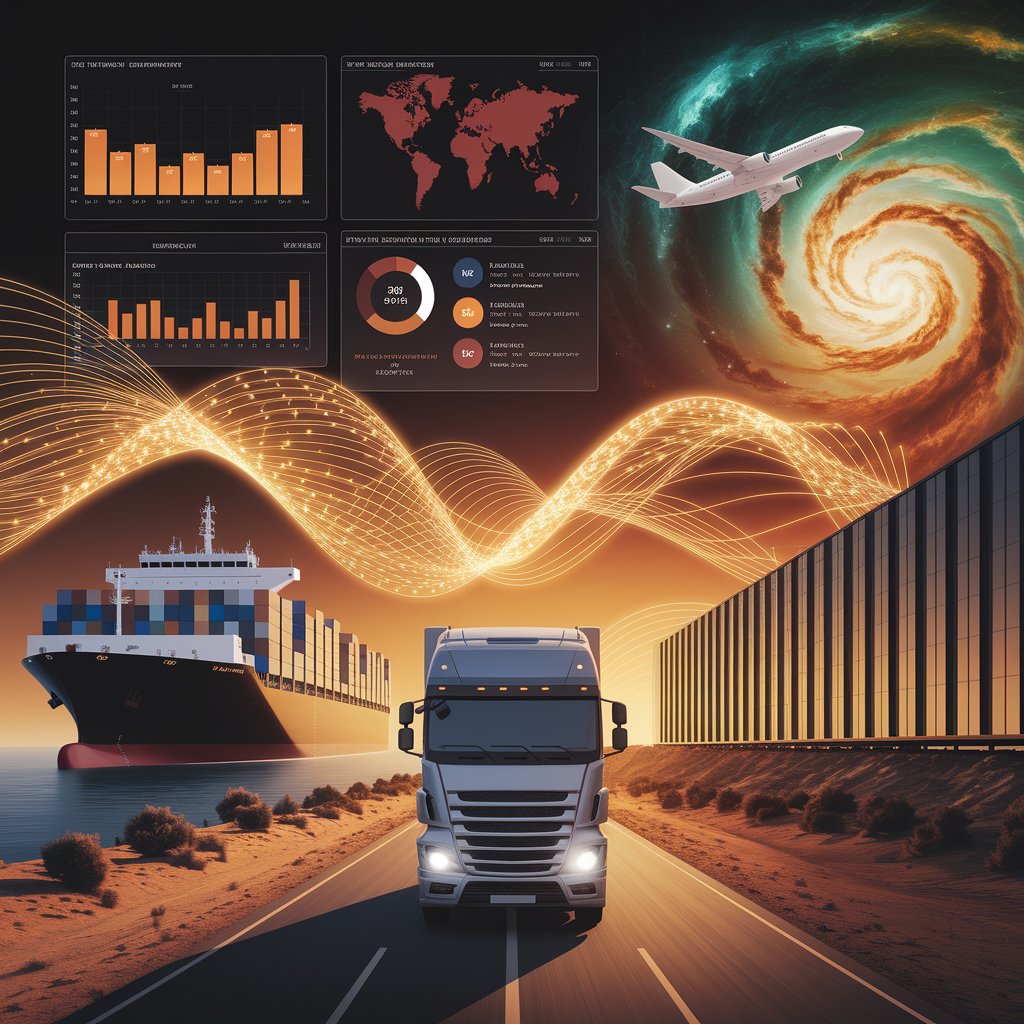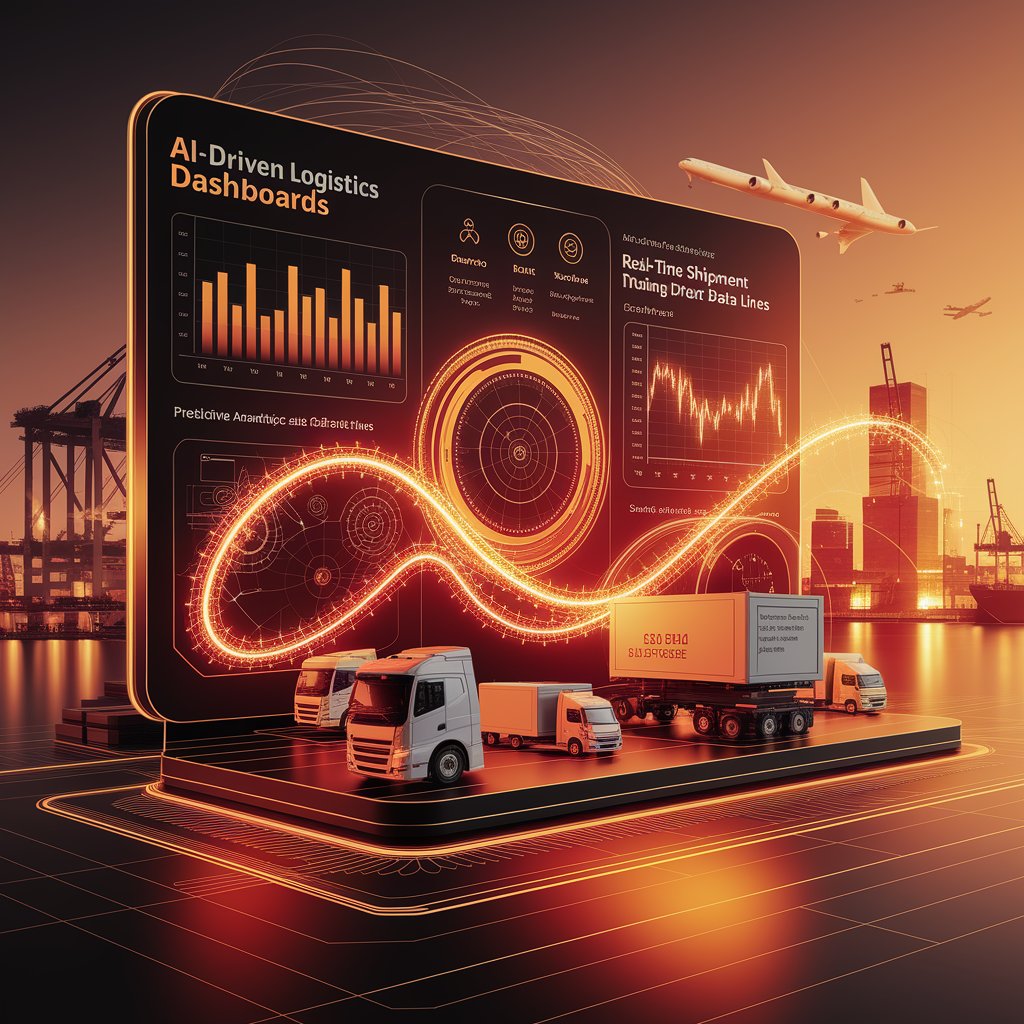AI-Driven Logistics Dashboards: Smarter Visibility for Global Supply Chains

Introduction
That’s where AI-driven logistics dashboards make the difference. By combining real-time data with artificial intelligence, these dashboards provide predictive and prescriptive insights, helping logistics providers and shippers make faster, smarter, and more resilient decisions.
What Are AI-Driven Logistics Dashboards?
AI-driven logistics dashboards are digital platforms that use artificial intelligence to visualize, analyze, and optimize supply chain performance. Unlike traditional dashboards, they don’t just display what’s happening—they anticipate what will happen next and recommend actions.
They integrate data from ERP, WMS, TMS, IoT devices, and external sources like weather, traffic, and global trade flows, turning fragmented information into actionable intelligence.

Key Features of AI-Driven Logistics Dashboards
- Predictive Analytics – Forecast demand, disruptions, and performance outcomes.
- Real-Time Tracking – Monitor shipments, fleets, and warehouses continuously.
- Anomaly Detection – Flag unusual patterns or risks automatically.
- Scenario Modeling – Simulate what-if situations for strategic planning.
- KPI Visualization – Interactive charts on costs, ETAs, capacity, and emissions.
- Self-Learning Insights – Dashboards evolve with new data and user behavior.
Benefits of AI-Driven Logistics Dashboards
- Improved Visibility – End-to-end supply chain intelligence in one place.
- Faster Decision-Making – AI highlights priorities and recommends next steps.
- Cost Savings – Identify inefficiencies and optimize resource allocation.
- Resilience – Detect risks early and act before they escalate.
- Customer Satisfaction – Provide accurate ETAs and proactive updates.
- Sustainability – Track and reduce CO₂ emissions with intelligent insights.

Real-World Applications
- Freight Forwarders – Monitor shipment volumes and carrier performance.
- Carriers – Manage fleets dynamically based on predictive demand.
- E-commerce Logistics – Gain visibility into high-volume delivery operations.
- Cold Chain Providers – Track sensitive shipments in real time.
- Global Shippers – Align multi-region operations with predictive dashboards.
Challenges in AI-Driven Logistics Dashboards
- Data Fragmentation – Disconnected systems reduce visibility.
- Integration Complexity – ERP, WMS, and TMS connections may be difficult.
- Cybersecurity Risks – Sensitive logistics data requires strong protection.
- Adoption Resistance – Teams may hesitate to trust AI recommendations.
- High Initial Costs – Advanced dashboard platforms require upfront investment.

Best Practices for Success
- Unify Data Sources – Integrate ERP, WMS, TMS, and IoT for real-time insights.
- Start with Key KPIs – Focus on costs, on-time delivery, and capacity first.
- Leverage Predictive Analytics – Go beyond descriptive data to prescriptive actions.
- Balance AI & Human Oversight – Combine automated recommendations with planner expertise.
- Promote Adoption – Train teams to interpret and act on AI insights.
- Track ROI – Measure efficiency, savings, and customer service improvements.
The Future of AI-Driven Logistics Dashboards 🚀
- Digital Twin Integration – Virtual models connected to dashboards in real time.
- Blockchain Data Layers – Secure and transparent logistics reporting.
- Voice-Enabled Dashboards – AI assistants delivering instant logistics insights.
- Edge AI Processing – Faster analysis directly at warehouses and ports.
- Sustainability-First Dashboards – Carbon tracking as a core performance metric.
Conclusion
AI-driven logistics dashboards are revolutionizing how companies manage supply chains. By combining predictive analytics with real-time monitoring, they provide actionable intelligence that reduces costs, improves service, and builds resilience.
For freight forwarders, carriers, and shippers, adopting isn’t just about visibility—it’s about enabling smarter, future-ready decision-making.
